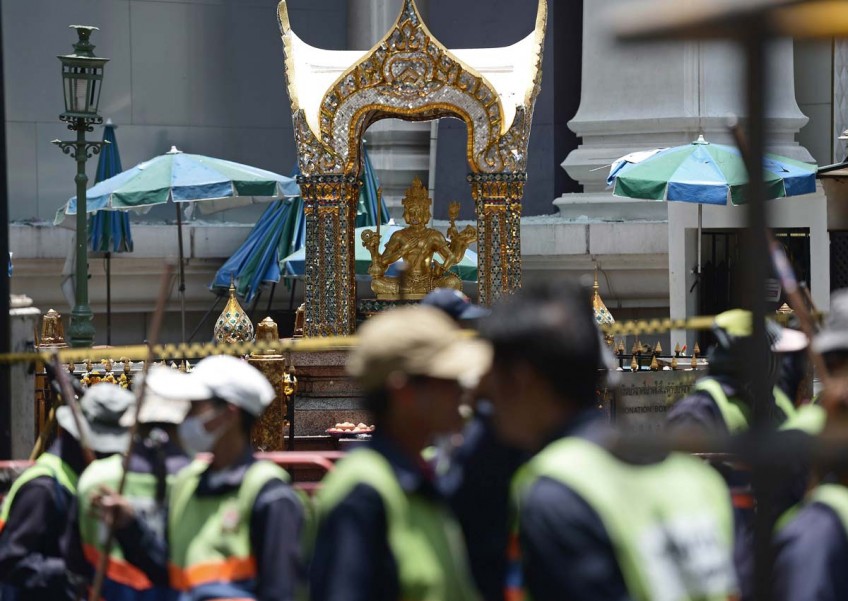Aftermath of Thailand's 'worst ever' attack

A powerful blast went off during evening rush hour in Bangkok's central shopping district on Monday night, killing at least 20 people, including one Singaporean.
Thailand's junta chief Prayut Chan-o-cha called the bombing at the popular Erawan Shrine the 'worst ever attack' on the kingdom.
No group has claimed responsibility so far. Here's a snapshot of views on questions raised in the aftermath of the attack.
WHO COULD BE RESPONSIBLE?
Dr Jeff Moore, chief executive officer of Muir Analytics, which provides terror and insurgency risk assessments for corporations, wrote this on The Diplomat website.
"One possibility is that this was an anti-government attack organised by radical factions of the 'red shirt' supporters of former prime minister Yingluck Shinawatra, who was toppled by the ruling junta in a coup last May.
"If so, it would be a surprising escalation. Red-related factions have staged attacks that produced casualties in the past.
However, while their arson attacks in Bangkok and other provinces have caused incredible property damage, they have not resulted in high body counts.
"A high-profile and higher-casualty attack like this one could cause the main faction of the reds to lose the moral high ground in the eyes of the Thai public.
"Another explanation is that this was the work of Muslim separatists in the south of the country, who have been waging an insurgency against the government for decades.
"If this was an insurgent attack, it would also represent a major escalation of that conflict.
While it is unclear why the insurgents would choose this particular time to escalate, they have struck outside the confines of the insurgency zone before.
"In May 2013, a presumed student faction of the insurgency set off a bomb next to Ramkhamhaeng University.
Other insurgent cells attacked Danok and Phuket last year. In keeping with this hypothesis, attacking a popular Buddhist/Hindu shrine is indeed in line with the more radical veins of the southern insurgency.
"Overall, both the reds and the insurgents do have an incentive to pressure the sitting government to accept their demands. Inflicting damage on Thailand's economy, its tourism industry, and the reputation of the ruling government would benefit both groups.
WHAT IS THE SIGNIFICANCE OF THE BLAST SITE?
Dr Moore wrote: "Location-wise, the Erawan Shrine is continually filled with tourists and worshippers.
It's situated on a busy intersection; it's on the city's most popular shopping street; it's directly below a skywalk for Bangkok's BTS/Skytrain; and it's close to scores of eateries and the Grand Hyatt hotel.
Hundreds of people pass by the shrine every 30 minutes on a daily basis."
HOW WILL THE JUNTA RESPOND?
Mr Elliot Brennan, non-resident research fellow with the Institute for Security and Development Policy's Asia Programme in Sweden, wrote on The Interpreter blog: "To the surprise of many, the government did not immediately go into lockdown and install a state of emergency or strict martial law.
But schools and businesses have been ordered closed by Prime Minister Prayuth Chan-o-cha.
"The attack is an unsettling one for the junta. It promised stability.
Now, under its watch, the largest and deadliest attack ever in Bangkok has taken place.
How the junta responds will be closely watched... An all-out assault on Malay separatists or a rounding up of 'red shirt' leaders is most likely the next move... That may be counter-productive.
An opening of democratic process and inclusive governance would be a smarter and more effective way to tackle deep grievances in Thai society."

This article was first published on August 19, 2015.
Get a copy of The Straits Times or go to straitstimes.com for more stories.